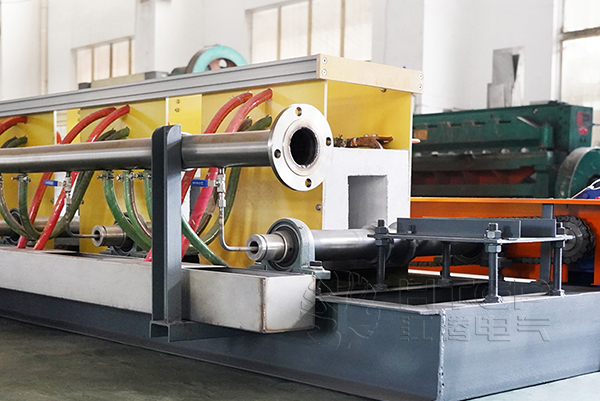How Does the Induction Heating Furnace Save Energy?
For a long time in the past, limited by the constraints of heating technology, high energy consumption, high emissions, and high pollution have almost become the portrayal of high-power industrial heating. In recent years, in the metal smelting and forging industry, the application of induction heating furnaces has been increasing gradually, showing powerful energy-saving performance and environmental protection capabilities. So, how does the induction heating furnace save energy?

1. Correct selection of current frequency
It is very important to select the proper current frequency for the induction heating furnace. This will directly affect the thermal efficiency of the inductor and the heating efficiency of the workpiece. For example, when heating a cylindrical blank with an induction furnace, we will get the highest heating efficiency if the ratio D/A of blank diameter to current penetration depth is between 2.5 and 5.5. However, if the ratio is less than 2.5, the heating efficiency of the blank will decrease. When the ratio exceeds 5.5 because the selected current frequency is too high, the heating time will be extended, the heat loss increases, the thermal efficiency decreases, and the heating efficiency also reduce. At the same time, the cost of the frequency conversion equipment used is also relatively high.
2. Increase the terminal voltage of the induction heating furnace
The increase of the inductor terminal voltage will inevitably increase the number of turns of the induction coil. Therefore, the current on the induction coil is reduced, the power loss of the inductor is reduced, the electrical efficiency of the inductor is improved, and the water consumption for cooling the induction coil is also reduced. Increasing the voltage of the inductor terminal is a better way to save energy for the induction heating furnace, and the induction heating furnace with low voltage and high current should be avoided as much as possible.
3. Correctly select the current density of the induction coil
When the current of the inductor is constant, the cross-sectional size of the pure copper tube of the induction coil should be controlled to control the current density within a certain range. As the current density increases, the power loss of the induction coil increases, and the electrical efficiency of the inductor decreases. Of course, the cross-sectional size of the pure copper tube of the induction coil also depends on the number of turns of the induction coil and the geometry of the inductor.
4. Choose good heat-resistant and heat-insulating materials
Choose materials with good thermal insulation properties to line the inner wall of the induction coil as the heat-resistant layer and heat-insulating layer, and reach a certain thickness. Only in this way can it play a good heat insulation effect, reduce the heat transfer loss of the blank, and improve the thermal efficiency of the inductor.
5. Make full use of the cooling water of the induction heating furnace
Sensor cooling water should be recycled to save water resources. At the same time, the cooled water also has a certain temperature and can be used for other applications to save heat energy.
In the field of traditional high-power heating, coal-fired heating, and resistance heating are the main ones. In the design of electric heating boilers and pipelines, resistance heating mainly relies on resistance wires to generate heat, and then indirectly conducts heat to the heated body. The preheating is slow and a large amount of heat is lost in vain.
The advantage of the induction heating furnace is that the workpiece itself is heated by electromagnetic induction cutting, which is non-contact and direct heating, and the utilization rate of heat energy is high. Frequency conversion electromagnetic induction heating can heat up to a temperature above 1,000 degrees and can heat a variety of materials, including general steel, stainless steel 304, 316, and other materials.

